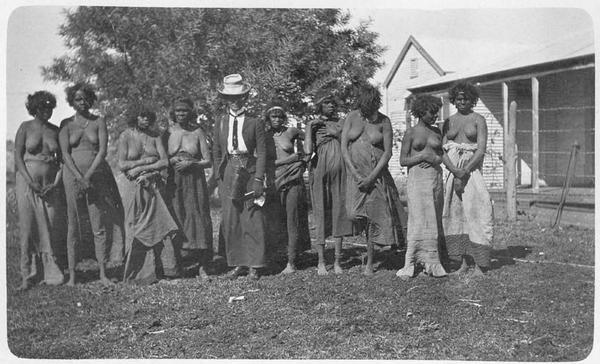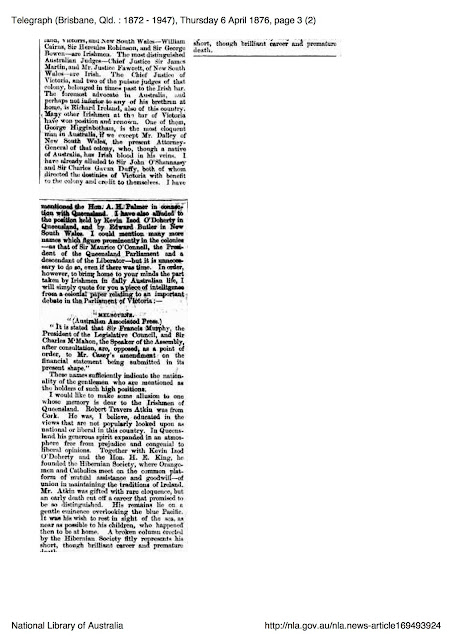While browsing through TROVE, I started to wonder about what the earliest Australian newspapers were like... where to find out? TROVE, naturally.
There were a number of articles to help... the first Australian newspaper was published on March 5th, 1803... a mere 214 years ago...
Australians have had a great love affair with newspapers, current and old. We may not all have weekly subscriptions as we once did, but there are so many of us who still love the printed word, even if it is online, and in repositories such as libraries. Many's the time I notice that cafes and coffee shops attract a regular clientele who sip their lattes while browsing the local newspapers...
A little over 103 years after the event, the Hilston Spectator and Lachlan River Advertiser gave the details of the first edition... you can click on the image to enlarge.
They seemed to be at great pains to point out that the first essential was a guaranteed supply of paper... seems logical to me. However, they had two things that were far greater... determination and persistence. I do love the last line as what the publisher of that great edition with grandiose name of the "Sydney Gazette and New South Wales Advertiser" was prepared to accept as payment for subscriptions..."copper, grain or bills".
They seemed to be at great pains to point out that the first essential was a guaranteed supply of paper... seems logical to me. However, they had two things that were far greater... determination and persistence. I do love the last line as what the publisher of that great edition with grandiose name of the "Sydney Gazette and New South Wales Advertiser" was prepared to accept as payment for subscriptions..."copper, grain or bills".
By 1821, we learn that the original publisher of the "Sydney Gazette and New South Wales Advertiser", who we later discover, was a man called George Howe, had passed away... and there was an impassioned plea that his son, Robert Howe, would be accepted as publisher.

Letters to the Editor have always played a big part in newspapers, perhaps a little less so now, as there are so many other outlets, but they gave the public a voice, as in this extract in May 1823. I won't post the full article, which would be eight pages long, but will give you the article's reference so you can read more than the first two pages if you wish...
Sydney Gazette and New South Wales Advertiser (NSW : 1803 - 1842), Thursday 15 May 1823, page 1
nla.news-article2181872
Later in the same year, (November) 1823, we see that there were numerous court reports.. which make very interesting reading. If you are looking for repeat 'felons', then the "Sydney Gazette and New South Wales Advertiser" may be just the place to search.
Shipping news was also important, as was the arrival of papers from other countries. Far too many items of interest to select just a few pages...
nla.news-article2181872
Later in the same year, (November) 1823, we see that there were numerous court reports.. which make very interesting reading. If you are looking for repeat 'felons', then the "Sydney Gazette and New South Wales Advertiser" may be just the place to search.
Shipping news was also important, as was the arrival of papers from other countries. Far too many items of interest to select just a few pages...
Sydney Gazette and New South Wales Advertiser (NSW : 1803 - 1842), Thursday 27 November 1823,
Then we come to this small item celebrating 129 years of newspapers... it appeared in the Northern Argus (Clare, S.A. ) in 1932...
We have so much to thank the likes of George Howe for... our news, our links to other countries, or even states and towns, details re shipping and court cases, local gossip and so much more. In effect, newspapers became the equivalent of the town squares of old.. it would be such a shame if they ever faded away.























































